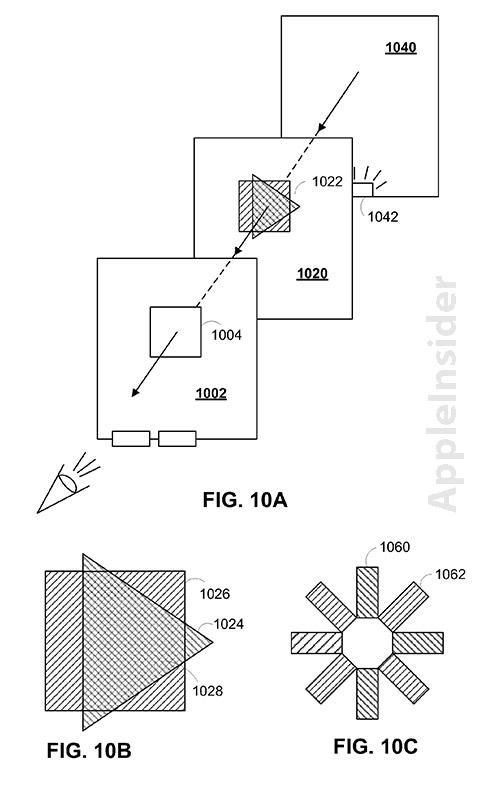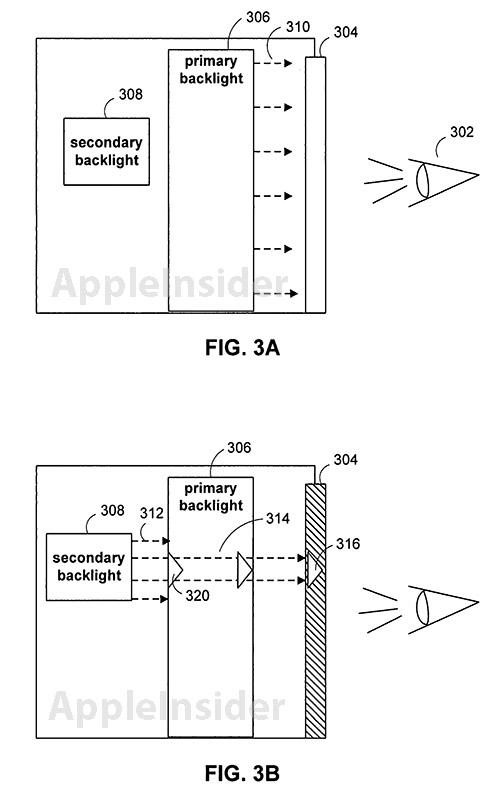The U.S. Patent and Trademark Office on Tuesday granted Apple a patent for a system in which the status of a portable device can be persistently displayed on-screen without having to turn on the display or primary backlight.

Source: USPTO
Apple notes that it may be necessary to check the status of a device, as many portable electronics simply shut off their displays when not in use as a method to conserve power. For example, an iPhone user has no way of knowing when their handset is on or off, or how much battery life is left, unless they turn on the main display.
While some solutions currently exist that display device status, they rely on technology that requires extra assembly and packaging, or takes away from the aesthetic appeal of the device.
In its U.S Patent No. 8,294,659 for a "Secondary backlight indicator for portable media devices," Apple describes a system in which a low-power, location-specific backlight is used to illuminate certain areas on a device's main display.
There are two modes covered in the invention, an "On" mode where the device's primary backlight and display are activated, and an "Off" mode in which a secondary low-power backlight is activated when the primary backlight and display are deactivated.

"On" and "Off" modes with respective backlighting.
Unlike other systems, the light is situated behind the primary backlight and display, and can be illuminated in sections. Instead of using cutouts in the device body, Apple's patent calls for icon shapes to be removed from multiple transparent or semi-transparent layers of primary backlight's system. When the low-power secondary backlight is turned on, the light emitted passes through the primary icon shaped regions of the primary backlight system's layers to the cover glass, but are blocked by color filters that hold a plurality of icon shapes.
In one embodiment, the icons can change shape and size when needed, a good example being a battery life indicator:
To vary the shape or size of each indicator, the shape and size of the color filters may be varied rather than the shape and size of the transparent or semitransparent regions of the primary backlight system. For example, color filters of different shapes and with different properties may be superimposed on each other. Thus, the shape of an icon on the display may depend on the color of light provided by the secondary backlight. This technique may also be used for icons that are displayed side-by-side.
The icons can also be dynamic, creating a blinking effect by pulsing the secondary backlight, which can in turn save power.
Different icons can be displayed in various screen locations.
Apple's invention allows for multiple icons to displayed on the device at any given location, with the secondary backlight selectively guiding light toward "certain regions of the primary backlight such that only selected icons are shown on the display."
It remains unclear if Apple will use the technology in an upcoming product, however space is already at a premium in the iPhone 5, making the addition of such a system questionable.